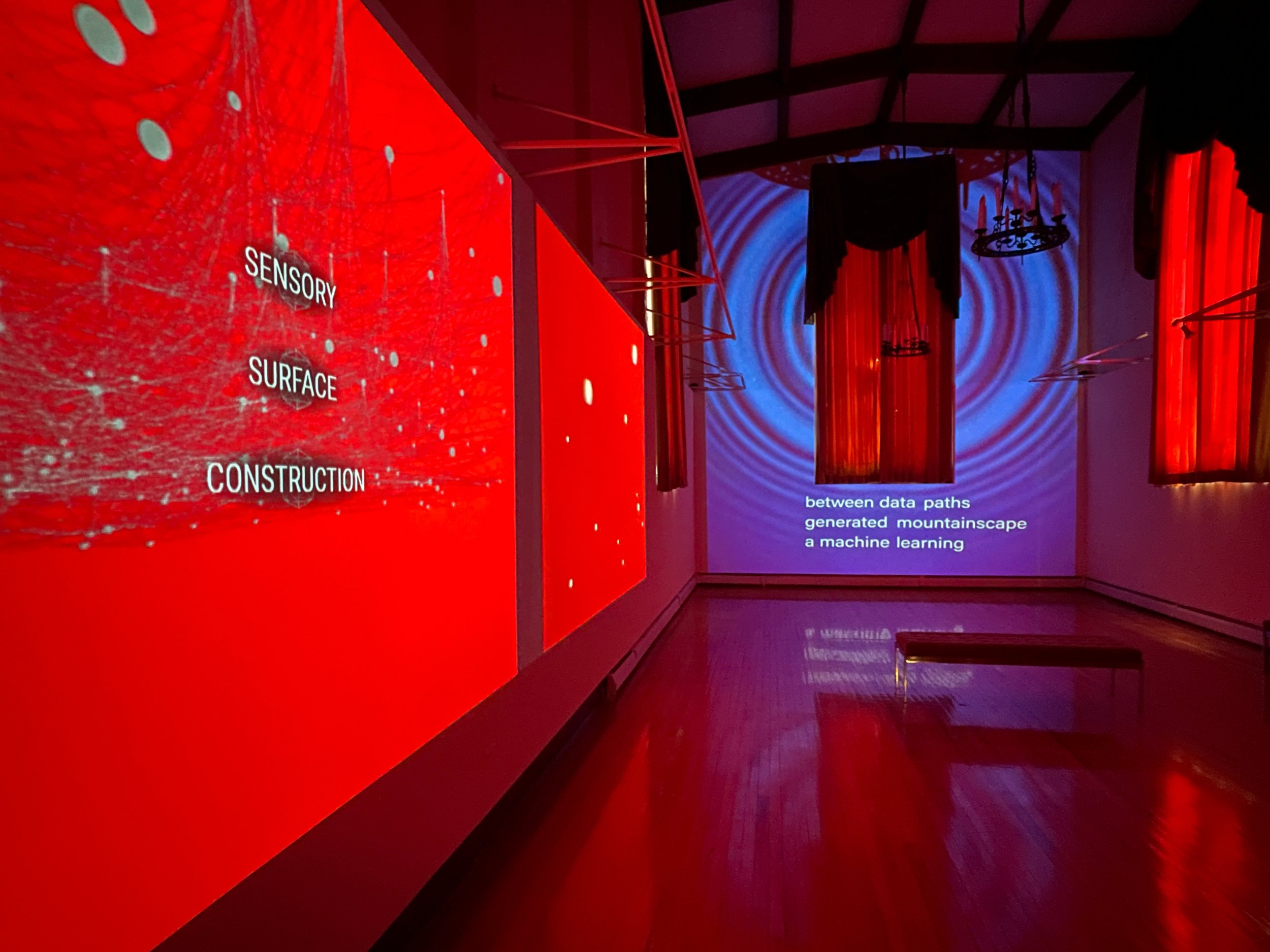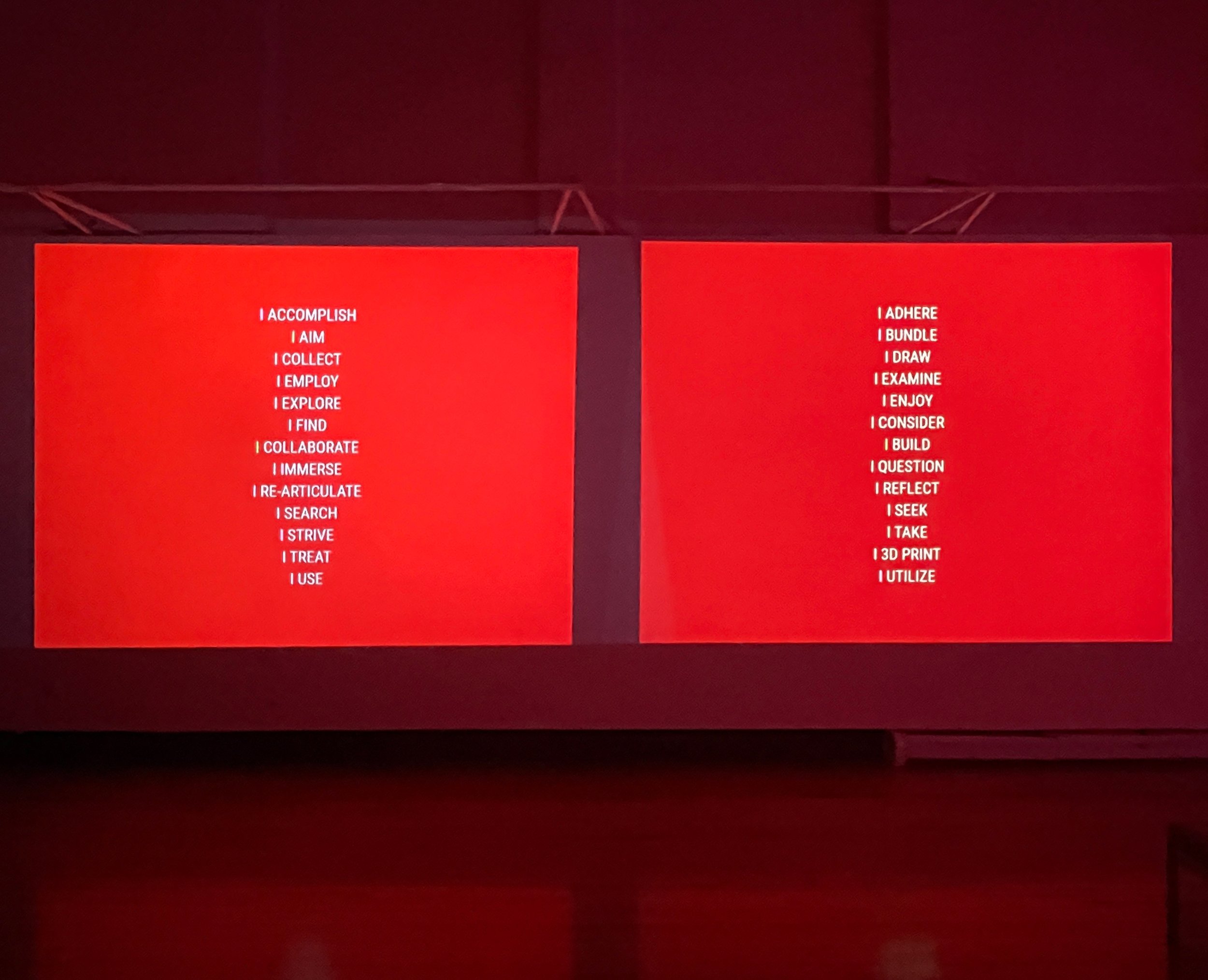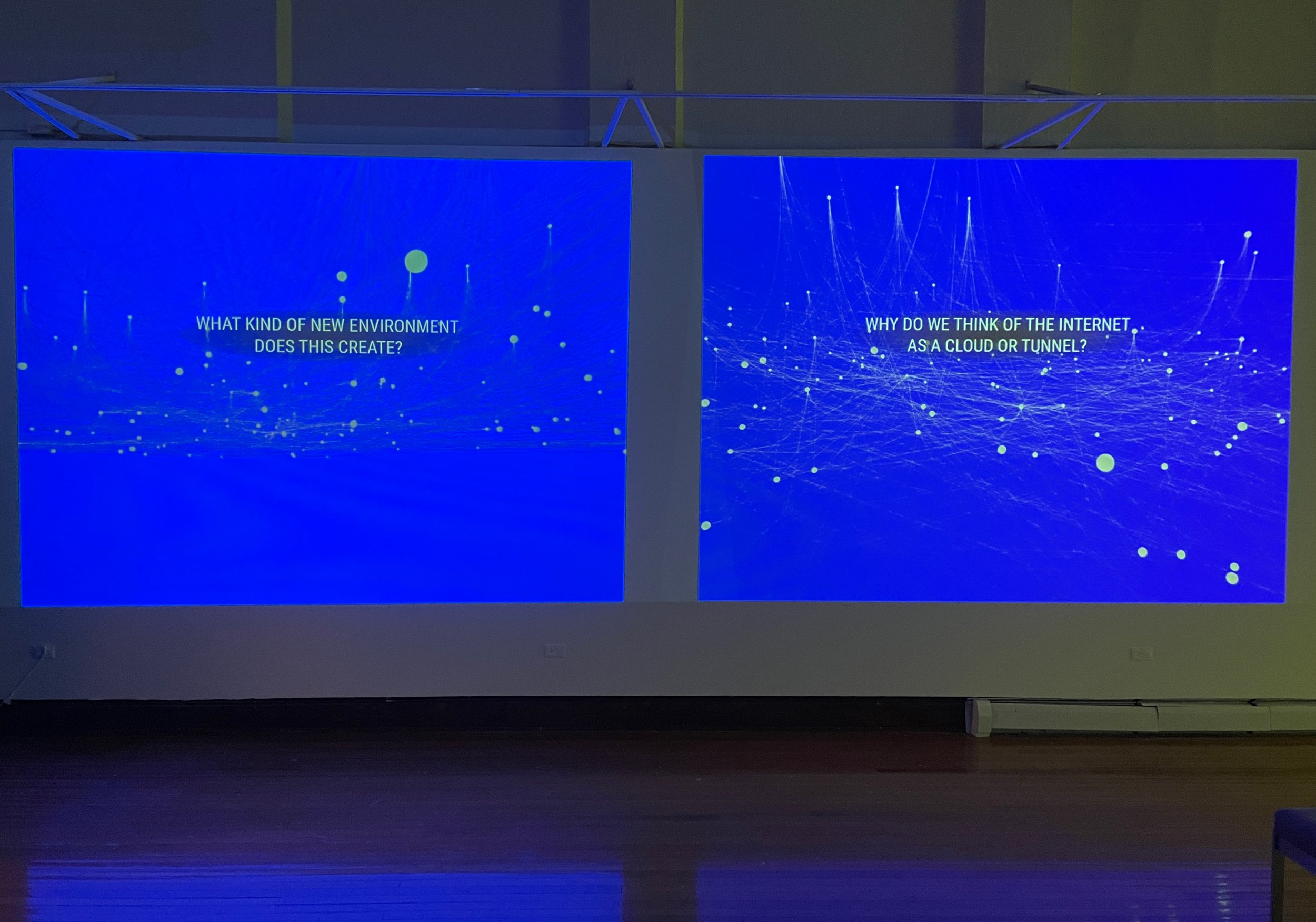
The Artist’s Way (2022)
Collaborative project with James Proctor
The Artist’s Way is an audiovisual navigation through the language space of artist statements created by Andrew Demirjian and James Proctor. The installation remixes over 400 artist statements of self-identified practitioners of digital/electronic arts practitioners to produce a generative three-dimensional poem, creating a linguistic hopscotch across the collective mind of digital artists. The Artist's Way consists of two large-scale projected artworks that draw upon the history of poetic structures to generate rules for parsing and sequencing the 16,000 words to form a new visual poem. By re-positioning the meta-language of artists' statements as the art itself, The Artist’s Way aims to create a space to contemplate the role that systems of language play in our engagement with art.
Video documentation of The Artist’s Way at the New Jersey City University, Lemmerman Gallery, Oct. 2022

Both the diptych and the vertical wall use a rotating series of rules to parse and remix the artist statement language, each segment lasts roughly one to two minutes. Some of the longer phrases come from rearranging all of the sentences alphabetically by the first word of each sentence. We also excerpt and display all of the aphorisms and questions from the artist statements.
Other parsing rules include searching the data base for references to a frequently used word or combination of words along with the next word, like ‘I + ____’, ‘my work + ____’, ‘this + ____’. Sometimes parts of speech analysis was used to make combinations of words or phonetic similarities were used to pair words. We also drew upon poetic forms like acrostics and haikus to create poems from the language.

The Artist’s Way is part of a lineage of artworks that are institutional critiques of the art world. This piece is a critique of the role of language in our contemporary art ecosystem from gallery wall text to press releases to funding organizations to graduate MFA program instruction to artist statements.
The idea for The Artist’s Way came from jurying a high-profile grant for digital media artists and having to read over 400 statements in a short period of time. I was struck by how similar so much of the language was and thought it was a clear example of how power works to shape a field – even one where originality is privileged – to conform to a rigid code. Often times, this body of language seemed so far removed from the sensations of awe, wonder and curiosity that art can produce.
We are concerned with how the words we use foreclose possibilities, reduce critical thinking, limit engagement and diminish sensitivity to sensory perception when we engage with art.


